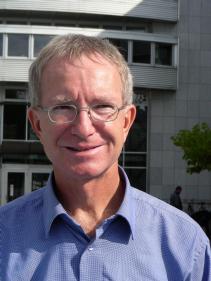Juerg Osterwalder, Physik-Institut, Universität Zürich, Switzerland
hewl102
Within the recently established Research Priority Program 'Light to Chemical Energy Conversion' (LightChEC) of the University of Zurich [1], our group is developing model systems, based on single-crystalline surfaces, for mechanistic studies of water splitting reactions. The approach builds on successful strategies within the consortium for the synthesis of novel molecular catalysts and photosynthesizers with promising performance in the homogeneous case. In close collaboration with synthetic groups, candidate molecules are immobilized in ordered monolayers at semiconductor and metal surfaces by appropriate linker groups, and then characterized in terms of adsorption geometry and bonding, structural dynamics and charge redistribution upon photoexcitation as well as excited state lifetimes.
A brief overview of the LightChEC Program will be given. The remainder of the talk will illustrate the surface science approaches used in our group, with a first example from within this context, and others that are not necessarily relevant for the solar water splitting / heterogeneous catalysis theme. The former case involves the formation of a cobalt complex of a cyclic tetrapyridil ligand directly on a Au(111) surface. Functionalized versions of this complex have shown excellent performance for homogeneous water reduction.
An important part of our activities is devoted to methods development. Specificallly, photoelectron diffraction experiments with x-ray and XUV excitation are used for determining molecular bonding geometries [2], and they are currently being extended into the ultrafast time domain by pump-probe schemes.
[1] For more information see http://www.lightchec.uzh.ch/index.html
[2] M. Greif et al., Phys. Rev. B 87, 085429 (2013)

